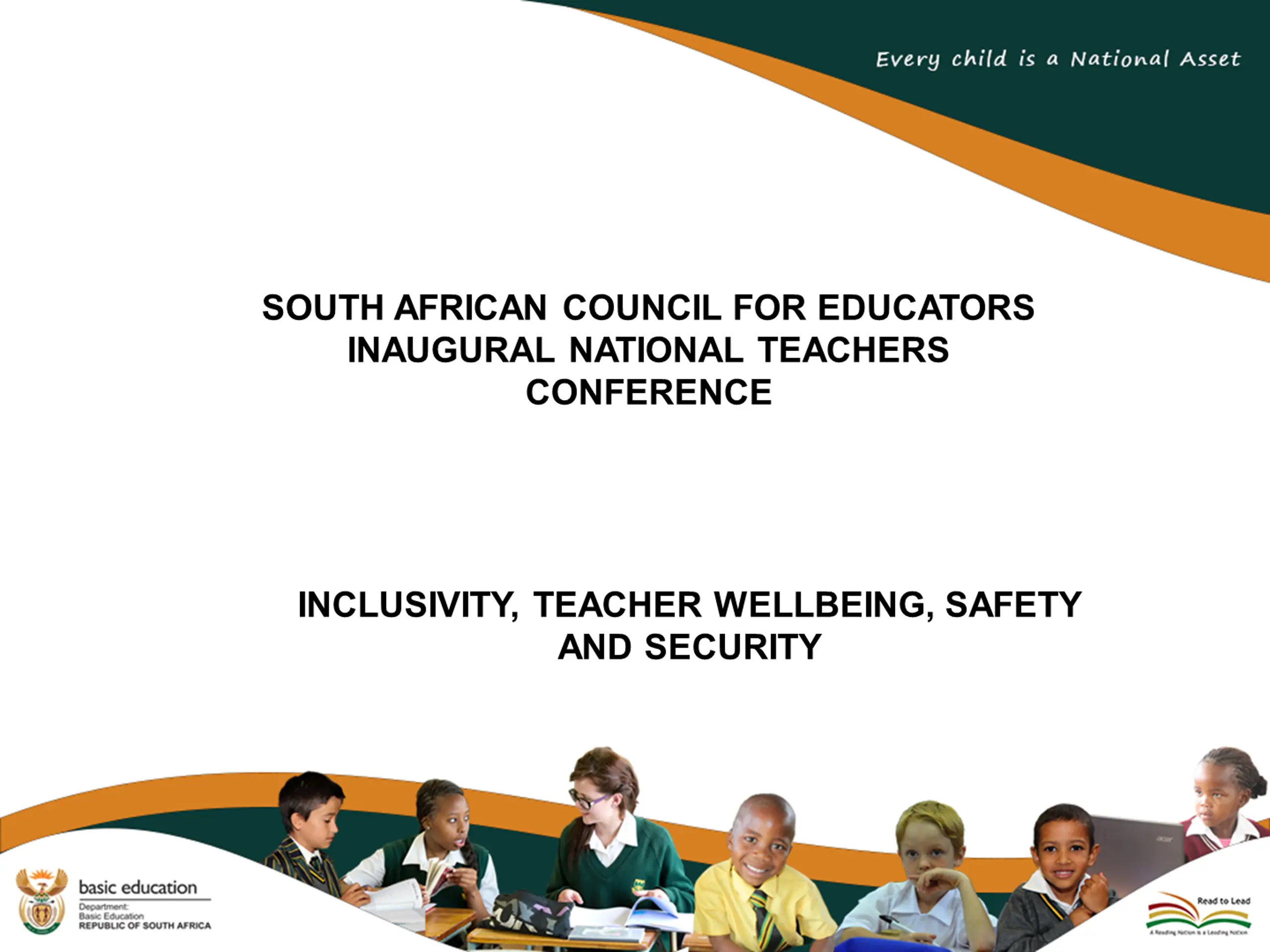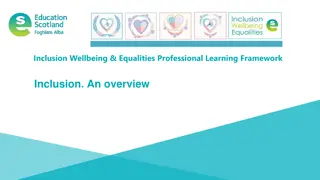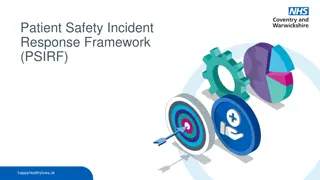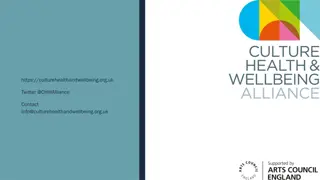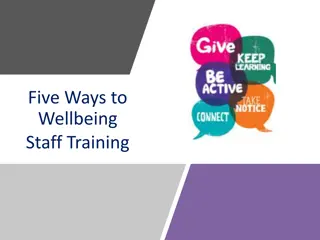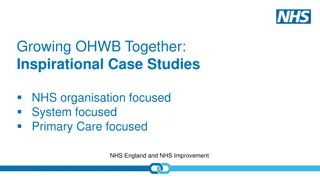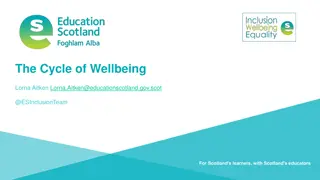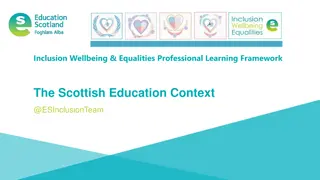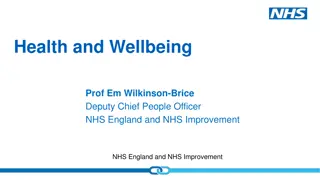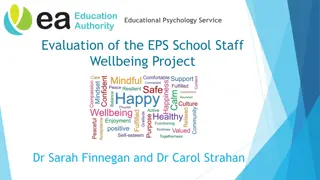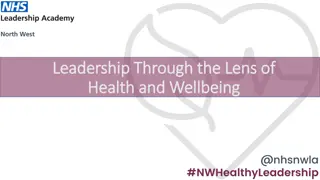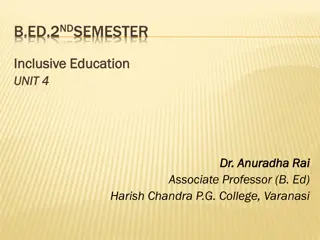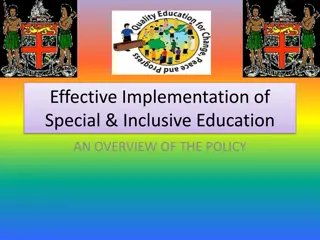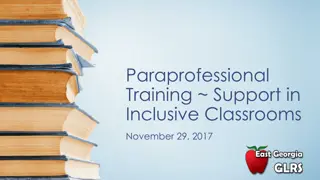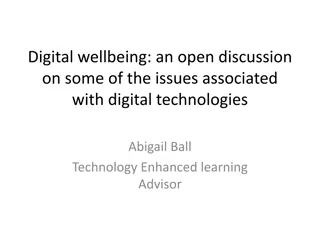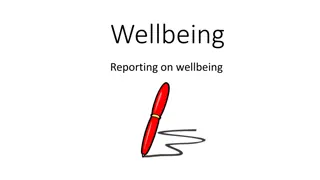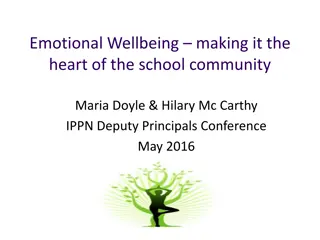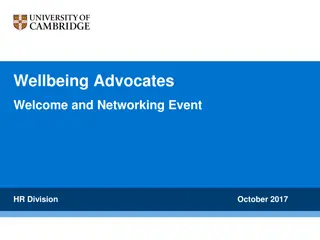CSTL: Inclusive Education Framework for Teacher Wellbeing & Safety
Explore the Care and Support for Teaching and Learning (CSTL) framework, its pillars, and revised action areas that promote inclusivity, teacher wellbeing, safety, and security. Discover the markers for teacher wellbeing and the Department of Basic Education's contributions, including advocacy materials and existing structural arrangements for CSTL implementation.
Download Presentation

Please find below an Image/Link to download the presentation.
The content on the website is provided AS IS for your information and personal use only. It may not be sold, licensed, or shared on other websites without obtaining consent from the author.If you encounter any issues during the download, it is possible that the publisher has removed the file from their server.
You are allowed to download the files provided on this website for personal or commercial use, subject to the condition that they are used lawfully. All files are the property of their respective owners.
The content on the website is provided AS IS for your information and personal use only. It may not be sold, licensed, or shared on other websites without obtaining consent from the author.
E N D
Presentation Transcript
SOUTH AFRICAN COUNCIL FOR EDUCATORS INAUGURAL NATIONAL TEACHERS CONFERENCE INCLUSIVITY, TEACHER WELLBEING, SAFETY AND SECURITY
Presentation Outline 1. Care and Support for Teaching and Learning (CSTL): An education sector framework 2. Intersecting vulnerabilities that impact on education outcomes for learners 3. The 10 CSTL Pillar / action areas 4. Revised pillars / action areas 5. Markers for teacher wellbeing 6. DBE Contribution 7. Advocacy Materials 8. Existing structural arrangement for CSTL 9. Partnership Protocol Between Department of Basic Education and the South African Police Service 10. Addressing the range of isms to address oppression and advance safety and security of teachers 11. Conclusion
Care & Support for Teaching & Learning (CSTL): An education sector framework A comprehensive, coordinated, multi-sectoral response to addressing barriers to learning and development that are preventing children from realising their right to education. Strengthening systems Partnering Integrated package of care and support Legal and policy mandate
Intersecting vulnerabilities that impact education outcomes for learners Insuffi- cient schools Lack of enabling school environ- ment Low quality teaching Hunger Low literate parents War Natural disasters HIV &AIDS Rural home No identity documents Child labour Absent parents Grief and trauma Customary practices Disability Gender stereotypes Low enrolment High drop out Poor performance Poverty Violence
Revised pillars / action areas 1. 2. Rights-based, socially inclusive school policies and practices Curriculum and co-curricular development and support to ensure development of agency, including the provision of teaching and learning materials and opportunities Teacher development and support to provide inclusive education for agency Inclusive, safe, and environmentally friendly infrastructure, including water and sanitation and technology Health promotion Nutritional support Safety and protection Material support to address multi-dimensional poverty Psychosocial support 10. Inclusive, transformational leadership, coordination, and management, inclusive of teachers, parental, learner, and community involvement 3. 4. 5. 6. 7. 8. 9.
Markers for teacher wellbeing DBE Study on the Health and Wellbeing of Educators (2016) Demographic characteristics Teaching responsibilities and workload Morale and job satisfaction Mental health HIV/AIDS and TB knowledge Sexual risk behaviour Stigma against HIV, STIs and TB Violence and crime within learning institutions GBV and Domestic Violence Discrimination, Prejudice and Related Intolerances
DBE contribution Comprehensive Sexuality Education through LO (CSE). The delivery of the Life Orientation curriculum for violence prevention and reversing the negative effects of harmful gender norms. Social Cohesion & Nation Building co-curricular programmes for raising awareness of positive behaviour, and the values that promote a peaceful society. National Strategic Plan 2020-2030 of the Gender-Based Violence and Femicide (NSP GBVF) Pillar 2: Prevention and Rebuilding Social Cohesion. Five-Year Outcomes Changed behaviour and social norms within key groups as a result of the rollout of evidence-based prevention interventions. Optimally harnessed Violence Against Children (VAC) programmes that have an impact on GBV eradication
Advocacy Materials The Prevent Violence in Schools Series of Manuals Learner Handbook Facilitator & Mentor Guide Speak Out: A handbook for learners on how to prevent sexual abuse Opening Our Eyes: A manual for educators on addressing GBV in South African Schools Values in Action: A training manual in constitutional values and school governance for school governing bodies and representative council of learners in South African public schools. Challenging Homophobic Bullying in Schools: A guide explaining clear and simple steps that teachers, learners and parents can do to make schools safer Social media campaigns on prevention of violence and child protection
Existing structural arrangement for CSTL Provincial and District level The School Based Support Team (SBST) must draw up an Individual Support Plan (ISP) support strategy and implement the ISP by following the SIAS process. District Based Support Team (DBST) approves or recommends different support that will be given, monitor and review it regularly The District Based Support Team informs the Provincial Office about the recommendation Care and Support services organised around the child. What structures can be used for educators?
Partnership Protocol Between Department of Basic Education and the South African Police Service The Department of Basic Education is responsible for monitoring and supporting provinces in the implementation of the National School Safety Framework (NSSF) in education districts across the country. Through the partnership (Protocol) with the South African Police Service (SAPS), DBE is involved in crime awareness campaigns and programmes with a strong focus on encouraging reporting of incidents by the schools on the South African Schools Administration Management System (SA.SAMS). Working with Community Policing Forums and the Quality Learning and Teaching Campaign (QLTC), DBE mobilises communities to take up ownership of schools. This also enhances efficiency of the referral system for learners with deviant behaviours (repetitive ill-discipline).
Addressing the range of isms to advance safety and security of teachers Racism, sexism, classism, ableism, heterosexism and other forms of oppression or isms, These issues are an interlocking system operating at the personal, interpersonal, institutional and cultural levels Many individuals only see or hear of examples at the personal level (an individual tells a racist joke or makes a homophobic slur) or at the interpersonal level (a principal expects lower performance from teacher of different race). Broadening our understanding of these four levels can assist in understanding oppression as a system and required interventions. Draft Protocol for the Elimination of Unfair Discrimination in Schools Draft Guidelines for the socio-educational inclusion of diverse Sexual Orientation, Gender Identity, Expression and Sex Characteristics. Need to design teacher-specific iterations, with SACE & ELRC.
